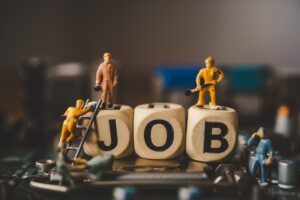
Oddly, the monthly jobs report also seems to be the hardest statistic for economists to predict. The newly-released report for May is a case in point; economic forecasters were expecting U.S. non-farm-related companies to add about 195,000 new jobs to their payrolls, which would mark a decline from April’s 253,000 reported new openings. In fact, the U.S. Bureau of Labor Statistics reported that there were 339,000 jobs created in May, and most of the coverage talked about the astonishment of Wall Street analysts. Any figure over 200,000 is considered a bullish sign for the economy.
For those who look closely at the numbers, the most interesting part of the report was that, despite the surprising number of new jobs, the unemployment rate went up, not down, from 3.4% to 3.7%. The two statistics come from two different surveys; one asking employers how many people they’re adding or subtracting in their payroll, the other asking households whether they’ve done work for pay in the past month. The contradiction can be resolved
if more people are returning to the workforce, who may previously have given up looking for employment. Another reason for the divergence is (and this is still unexplained) the number of self-employed individuals fell by 369,000 from April to May. Self-employed people are counted in the survey of household but not in the survey of businesses.
Other job-related indicators were similarly mixed. The average work week declined a bit, from 34.4 hours to 34.3 hours, but average hourly pay rose 4.3% over a year earlier. That’s down from 6% a year ago, suggesting that companies may not be bidding quite as aggressively against each other for workers.
What does this mean for you and me? Every finger points to the Federal Reserve Board’s response, which might see the huge increase in jobs as an alarming sign that the economy is overheating and inflation is ramping back up (rate increase, higher borrowing costs and one step closer to a recession) or as a blip on the radar (no rate hike and more enthusiasm for stock market performance). It also means that the economists who have been predicting an imminent recession seem to be wrong yet again. Sooner or later, they’ll get their wish, but probably not when America’s companies are aggressively hiring new workers.